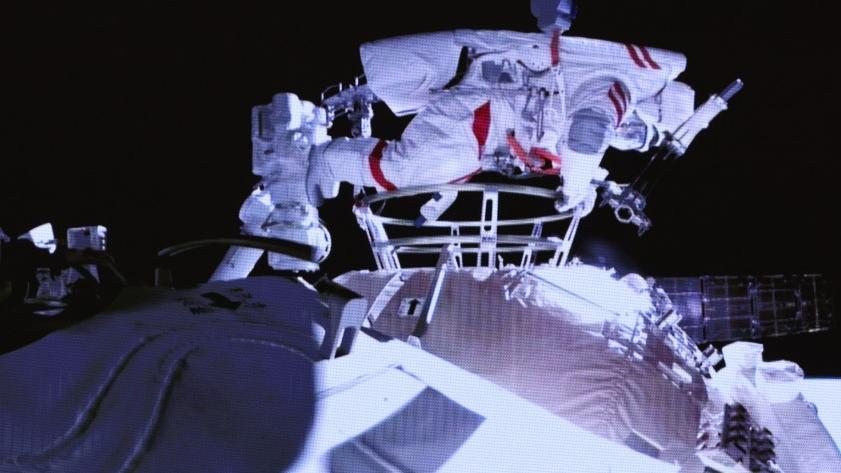 Chinese astronauts Major General Liu Boming and Senior Colonel Tang Hongbo are seen doing extravehicular activities (EVAs) out of the space station core module Tianhe on 4 July 2021. (PHOTO / XINHUA)
Chinese astronauts Major General Liu Boming and Senior Colonel Tang Hongbo are seen doing extravehicular activities (EVAs) out of the space station core module Tianhe on 4 July 2021. (PHOTO / XINHUA)
BEIJING - China's self-developed spacesuits have ensured the safety of astronauts during their stay in the space station core module Tianhe and while performing extravehicular activities (EVAs) outside the module.
The space gears include intravehicular spacesuits and extravehicular spacesuits, according to different scenarios, said Zhang Wanxin, director of the astronaut suit project under the Astronaut Center of China (ACC).
Intravehicular spacesuits, which are for astronauts to wear inside the spacecraft, ensure ventilation and heat dissipation of the astronauts under normal circumstances and provide oxygen to ensure their safety once the spacecraft leaks, Zhang added.
The space gears include intravehicular spacesuits and extravehicular spacesuits, according to different scenarios, said Zhang Wanxin, director of the astronaut suit project under the Astronaut Center of China
ALSO READ: Microwave makes Chinese space station feel like home
The extravehicular suit, like a small aircraft, provides safe and effective environmental protection, environmental control and life support for astronauts when they work outside the spacecraft, he said, adding that extravehicular suits should not only meet the life support needs of astronauts but also allow them to complete extravehicular activities.
The new-generation homemade extravehicular spacesuit used in the extravehicular mission is about 2 meters in height and weighs more than 100 kilograms, with longer service life, higher reliability and better flexibility compared to the previous versions, according to Zhang.
Though heavy, the extravehicular suits used bionic structures to facilitate the activities of astronauts. All the joints of the upper and lower limbs are equipped with airtight bearings so that the astronauts' hands and feet can move freely, according to the China Manned Space Engineering Office (CMSEO).
The spacesuit helmet is equipped with a camera, a light and a high-tech window, the CMSEO said, adding that the suit can contain water and food for long-duration extravehicular activities.
READ MORE: Astronauts enjoy many food, beverage choices in orbit
Every set of extravehicular spacesuit, which consists of 100 components, has gone through strict procedures in the process of development, production and final assembly, said Deng Xiaowei with the ACC.
A series of environmental tests, pressure performance tests, ergonomic verification and evaluation have also been carried out on the extravehicular spacesuits to ensure the astronauts' absolute safety, Deng said.


